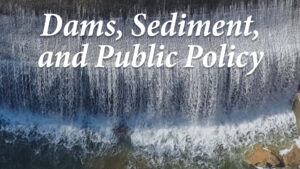 Speaker: Dr. Andrew Miller
Speaker: Dr. Andrew Miller
Department of Geography and Environmental Systems, University of Maryland – Baltimore County
Co-sponsor: School of Earth and Climate Sciences
Dr. Miller is interested in the hydrology, hydraulics and geomorphology of extreme floods with a particular focus in recent years on urban floods. He has continuing research interests in the fate and transport of sediment in the landscape, including sediment currently stored behind dams as well as historical legacy sediment stored in valley bottoms, and he is also interested in the effectiveness of stream restoration and other approaches to mitigation of the consequences of urban runoff. He is a co-investigator on a project supported by American Rivers and NOAA to track the downstream progress of sediment released by the removal in September 2018 of the 36-foot-high Bloede Dam on the lower Patapsco River in Maryland, and is lead author of the guidebook for a 2018 AGU Centennial Field Trip to the dam site and lower floodplain. He is incoming chair of the Chesapeake Bay Program Scientific and Technical Advisory Committee (STAC), has been a member of review committees for the Chesapeake Bay Watershed Model and the Army Corps of Engineers report on options for managing sediment associated with the filling of the Conowingo Dam at the head of Chesapeake Bay, and served as chair of the steering committee for a 2017 STAC workshop on Legacy Sediment, Riparian Corridors, and Total Maximum Daily Loads. His talk will cover topics at the intersection of earth science and public policy related to dams, sediment, and associated impacts on aquatic ecosystems.


